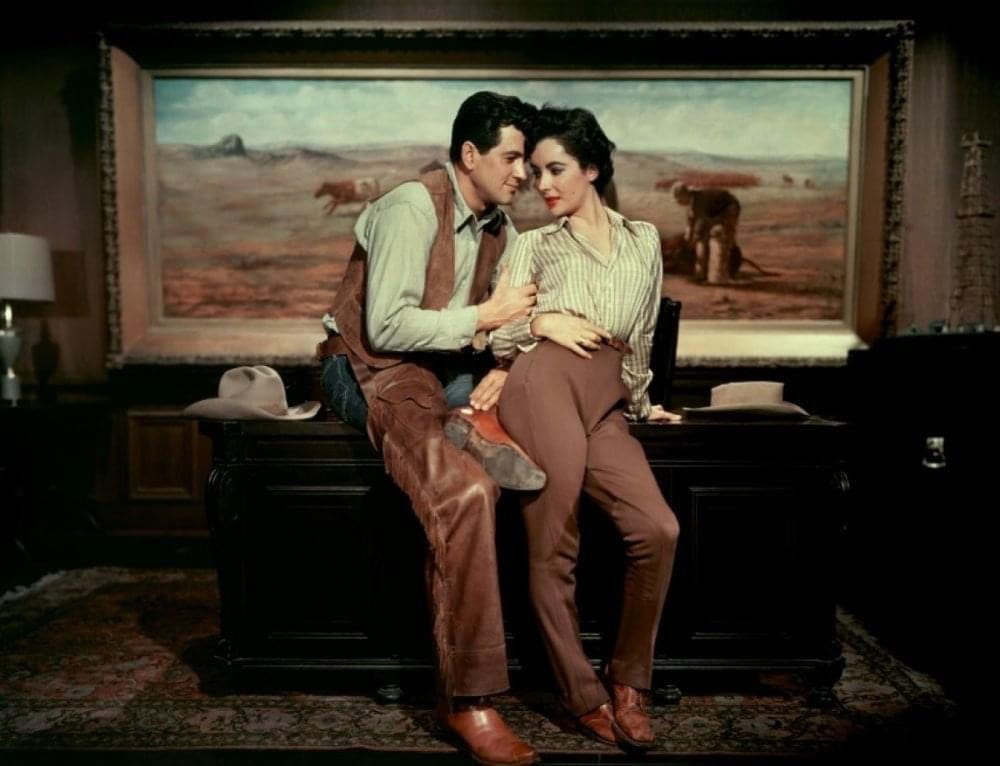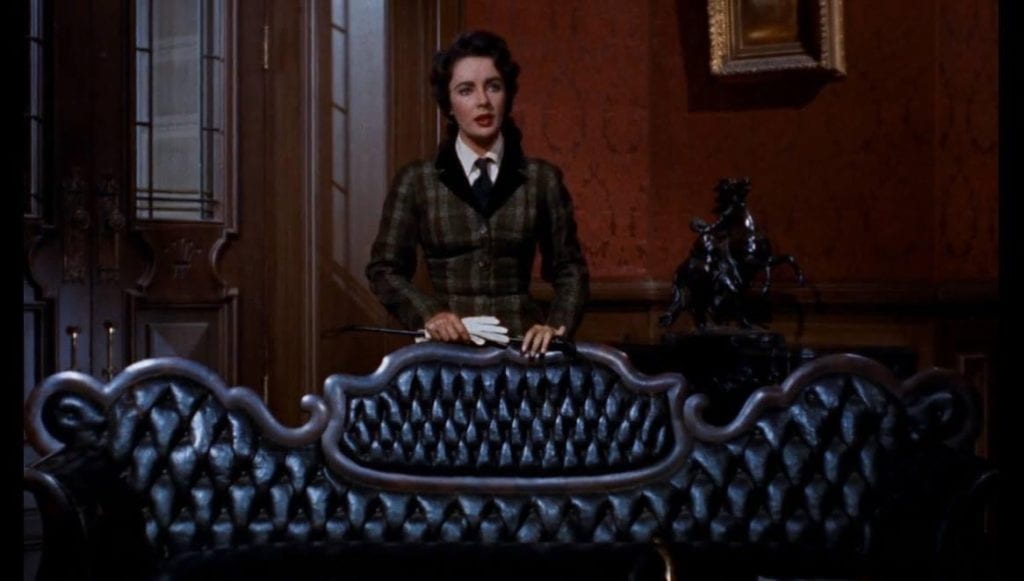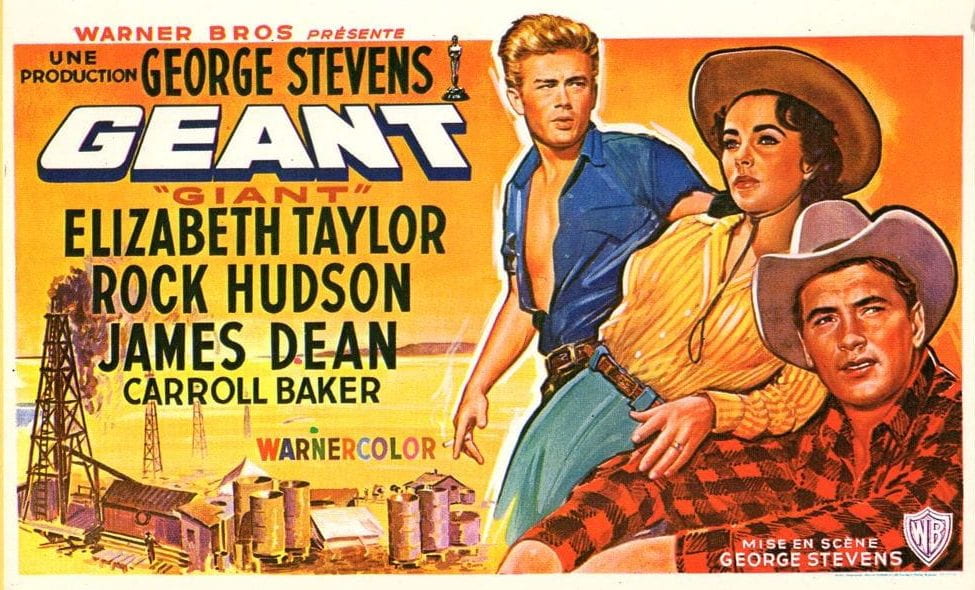
What ever happened to George Stevens? The director of such classic Hollywood titles as Swing Time (1936), The More the Merrier (1943), A Place in the Sun (1951), and Shane (1953), Stevens was one of the most acclaimed filmmakers of his day, winning the Academy Award for Best Director on two separate occasions. These days, however, Stevens seems to have become underappreciated and unfashionable, with more scholarship and criticism currently being devoted to the contemporary melodramas of Douglas Sirk, Vincente Minnelli, and Nicholas Ray. Unlike Sirk, Stevens never subverted the meanings of his own melodramas with chilly modernist devices and Brechtian effects; like Minnelli, he occasionally liked to revel in excess for its own sake. Stevens’ excesses, though, were often of a narrative, rather than stylistic, kind – a sprawling, epic form of storytelling which embraces the passage of time and which becomes more prevalent in the films he made after the Second World War. Perhaps the biggest and boldest of Stevens’s epic post-war melodramas was Giant (1956), a landmark and politically prescient work about a feuding, dynastic family in Texas. In the same year of its release, Nicholas Ray made a film called Bigger Than Life (1956), a disturbing examination of the American nuclear family, and I agree with Peter Tonguette in this BFI piece that “Bigger Than Texas” might have been a fitting title for Stevens’s film, which is obsessed with matters of size and scale at both its visual and narrative levels.

Giant is very much a film of dichotomies and oppositions. Its story of a woman from the east (Liz Taylor) who marries a wealthy Texas land baron (Rock Hudson) and goes to live with him in his huge, gothic mansion and surrounding estate (for the critic Dave Kehr, this “sprawling mansion on the plain, designed by art director Boris Levin, remains one of the most memorable graphic images of the ‘50s”) sets up a central, irresolvable conflict between Taylor’s feminism and genteel liberalism against Hudson’s conservativism and obsession with patriarchal tradition. James Dean, as the poor, eccentric loner who loves Taylor and strikes it rich when he finds oil on his small plot of land, introduces a tertiary opposition into the film, a kind of fight over the spirit of Texas itself: the stubborn pioneer spirit of Hudson’s traditional agricultural family against the newer veneers of greed and corruption which the oil industry symbolically introduces. Rather than trying to move toward a neat resolution of these fundamental conflicts, Stevens indulges them over the course of the film’s lengthy duration, burrowing further into the heated theatrics of a multigenerational melodrama so that the film takes on the grand contours of opera, resembling a kind of gaudy American cousin to, say, Visconti’s Senso (1954).

Aesthetically, Stevens likes to use lengthy, slow dissolves when transitioning between images, especially at the end of sequences, perhaps as a way of linking certain scenes in the viewer’s mind which actually take place years apart within the narrative. This lingering emphasis on the passage of time also underscores how little the central characters change over the course of many years: Taylor’s and Hudson’s characters, especially, seem to remain firmly resolute in their ideals across long spans of time, seemingly becoming unwavering, gothic fixtures of the forbidding home they inhabit. In this sense, Giant can be seen as an iconic film in that its characters are meant to be taken as archetypes or symbolic presences rather than as psychologically acute, dynamic individuals; this is another way in which Stevens’ conception of melodrama differs from someone like Minnelli’s, who liked to allow his characters to disrupt the fiction with their own piercing subjectivity.
Though Giant’s color design lacks the screaming eccentricity of a Sirk or a Minnelli, Stevens and his photographer William C. Mellor sustain visual interest throughout by consistently emphasizing the largeness of sizes and quantities in relation to the vast openness of the plains setting. The exterior of the house remains the most famous example of this tendency, an enormous emblem of wealth and decadence that’s perversely situated in the middle of a scorching wasteland, populated more by cattle than humans. The interior chambers of the home are lit very strangely, and in multiple scenes, darkness and other foregrounded objects (a newspaper, a curtain) serve to completely obscure one of the two characters speaking, usually Taylor’s character. In this regard, the domain of the home in Giant never becomes a tame or reassuring space for its resident family members. As in the more overtly gothic films of Hitchcock, such as Rebecca (1940) or Suspicion (1941), the home becomes a space of uncertainty, with certain rooms taking on an aura of psychic foreboding. But unlike Joan Fontaine’s characters in those earlier (and otherwise quite different) films, Liz Taylor’s character here is never represented as mousy or uncertain; she puts up a ferocious battle against the suffocating Texan ideals which make her feel like an unwelcome guest in her own home. Additionally, the eruption of oil on James Dean’s land seems to possess a kind of phallic energy or thrust, probably related to the ways in which the male characters of Giant equate money with masculinity and vice versa.

So, George Stevens remains, for me, an example of a filmmaker who was perhaps overrated in his own time and who is now grotesquely underrated today. One source of this relative neglect is perhaps the fact that Stevens’s career, more strongly than any of his contemporaries, was very much fractured and split in two by the war. His films from before the war, such as the great melodrama Penny Serenade (1941) or the famous rom-com The More the Merrier, tend to be much smaller in scope and narrative ambition, and even when they do take place over the course of multiple years, as Penny Serenade does, the passage of time doesn’t feel belabored or emphasized in the ways it will come to be in the post-war films. During the war, Stevens went to Europe with the U.S. military, where he filmed the Nazi concentration camps and other horrors firsthand. This experience, perhaps unsurprisingly, seems to have made a deep impact not only on his life but on his art as well: beginning with his first post-war film, I Remember Mama (1948, in some ways my favorite of his films), his work acquires a certain seriousness of tone and a maturity of perspective, and matters of time and memory begin to take on paramount importance in his cinema. Giant definitely remains a key film for understanding Stevens’s late style, and for a film that constantly revels in the hugeness of its own vision, it will be best appreciated on a giant screen.

For more writing on George Stevens on the blog, check out Jesse Pasternack’s piece on Stevens’s “American trilogy,” consisting of A Place in the Sun, Shane, and Giant, Michaela Owens’s breakdown of a scene in Stevens’s The More the Merrier, as well as my comments about I Remember Mama in this festival dispatch from Bologna’s Il Cinema Ritrovato, which hosted a Stevens retrospective in 2021.
Giant screens on June 17 at 4 pm at IU Cinema as part of its Critics’ Pics: Selections from AFI and Sight Sound series. A Place in the Sun screened there in 2018 as part of the Sunday Matinee Classics season which highlighted the costume designs of Edith Head, while Shane was previously screened in 2012 in conjunction with the City Lights Film Series.

Jack Miller enjoys the films of Howard Hawks, Jacques Tourneur and John Ford. He graduated from Indiana University with a BA in English, and currently resides in Chicago. He also enjoys listening to country and disco music.